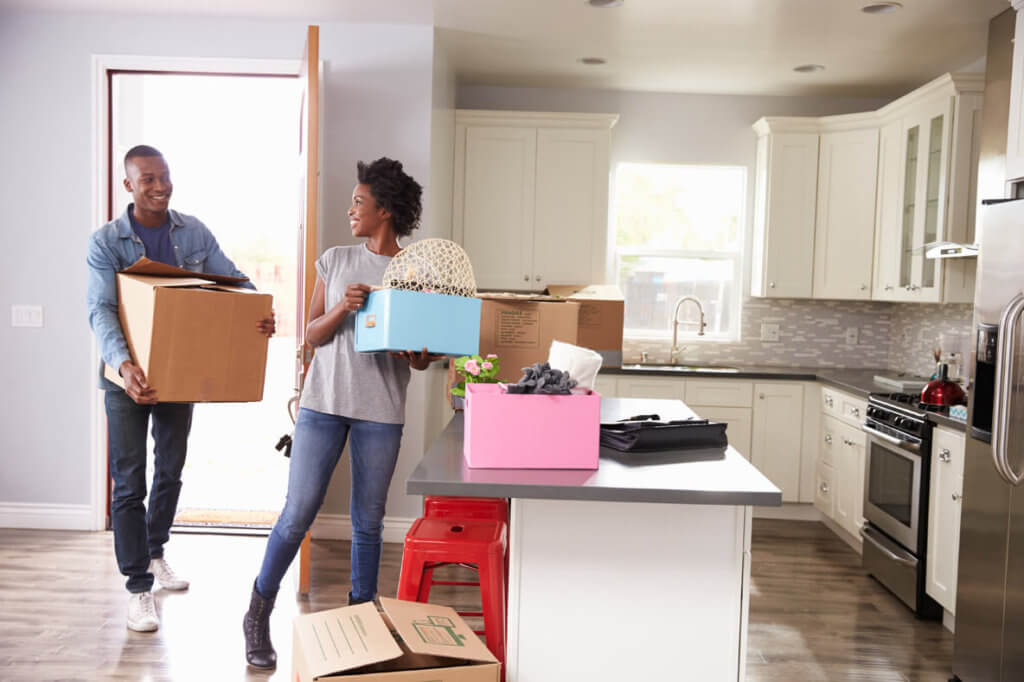In today’s current environment, moving into a new home can be stressful. Be sure to set your expectations and proceed with caution. Whether you’re moving across town or across country. It’s hard work. Don’t let fear of moving stop you from finding your dream home and planting the “For Sale” sign on your front lawn. Our tips can help make your big move to your new Taylor Morrison home go faster, smoother and a whole lot easier.
Have a Moving Master Plan
If you can avoid paperwork, try to do all things digitally to avoid the passing of pens, etc.
Start with a three-ring binder. Pick a bright color so it doesn’t get lost or packed. Stock yours with plenty of zippered pouches so you don’t have to hassle with punching holes or worry about little slips of important info getting lost. Even if everything ends up in the same zippered pouch, at least you’ll have it all in one place. Trust us, this is the best $5 you’ll spend. Bare minimum important things to put in your binder include:
- Receipts – anything and everything related to the move
- Insurance policies
- Vehicle pink slips. You may need proof of ownership to register your car in a new state.
- Prescriptions for your family and your pets
- Birth certificates
- Immunization records
- School records for your kids
- Important phone numbers, you know, just in case you lose your mobile phone
- Mover’s inventory list
- A check list of things you have to do. Cross them off as they’re done. You’ll feel less stressed as the list shrinks.
Finish what can be done ahead:
- Tell the post office you’re moving. You should be able to do that online.
- Change your address for important accounts including bills, credit cards, insurance, memberships and subscriptions. The post office will only forward some (and not all) mail for a few months.
- If possible, enroll your kids in the schools they’ll be attending, or at least find out what that will require so you can have it handy.
- Find a new primary physician, dentist, veterinarian and any other healthcare specialist you routinely see
- Schedule utility turn off at your old place and utility turn on at your new house. Don’t forget the TV and Internet service provider. A few days’ overlap well worth the few dollars it will cost.
- Plan ahead for what can go wrong. Get referrals for reputable plumbers, electricians, handymen other tradesmen in your new area. If the toilet inexplicably backs up, you won’t waste precious time searching for a plumber.
- Know the location of the nearest hospital emergency room, fire department and 24-hour vet in your new neighborhood.
- Buy your moving supplies: tape, boxes, plastic bins, etc. Resist the urge to use old grocery store boxes. New boxes are a lot cheaper than a visit from the exterminator.
- Pack up what you can ahead of time and securely tape detailed lists of what’s inside on top. New boxes usually have room list on the side that you can check with a black marker.
- Get a new set of keys for every adult in your home plus a spare set that you can leave with someone you trust
- Check with your insurance agent to see if you’ll need to upgrade your homeowner’s policy. While most mortgages include insurance the policy doesn’t necessarily cover loss or damage of your personal property under all circumstances. Your agent may also recommend coverage for other perils (floods or earthquakes for example) that aren’t included in your standard policy.
- Use our maintenance tips and schedules for more pre-move-in tasks
A Day or Two Before Your Move
Arrange a day or two off from work on either side of your move. If possible, board your pets and leave the smaller kids with grandma or a doting auntie. Use the time, if possible, to do a little prep at your new home. Even brand new Taylor Morrison homes can use a little prep work.
- Dust, vacuum, damp mop and wipe down counters. Or consider hiring a service that specializes in pre-move-in cleanup.
- Hang your window treatments (also much easier). Don’t forget to bring your cordless drill/driver, a level and a ladder.
- Line cupboard shelves and drawers
- Explore the local market and stock up snacks, beverages, paper plates and napkins and sandwich-making supplies for move-in day
- Put toilet paper in all the bathrooms
- Bring a supply of light-bulbs and batteries
- Test all the smoke/radon alarms
- Make sure everything that should be working is working: lights, water, toilets, garage door opener, and security alarm
The Night Before
Pack a suitcase or duffle for each person in your household that includes a change of clothes, clean PJs, tooth brush, any prescription meds and any other essentials. Pack a bag for Kitty or Fido, too, with food, bowls, any meds and the litter box. Stow them in your car so they don’t end up in the moving van. Be sure to ask if tipping on a credit card is an option or see if the movers have a Venmo account to avoid handling cash.
YAY! It’s Moving Day!
Everything is packed and the movers are arriving. You will likely have a skeleton crew in order maintain the social distancing guidelines. Be sure to communicate where you want the movers to place your belongings. Some movers may only drop off your items in the garage to limit exposure to your new home. Communicate and ask questions before your start. Wear protective face masks, gloves and have hand sanitizers ready.
Do a final walk-thru your house to see if you’ve forgotten anything. Lock up and hit the road for your new house. When the movers arrive, unless they’re being paid to unpack, do a quick check to make sure the box count at your new place matches what went on the van at your old place. You might want to open a couple of boxes with fragile items to make sure they arrived unscathed before you release the movers. No worries if you find something busted later on; your insurance or the mover’s insurance will cover it. Just be sure to document the damage (use your mobile camera).
Organize Your New Nest
Consider unpacking your own items. Sometimes movers provide this service, but unpacking by yourself is safer. Be sure to wipe down or sanitize the items as you conquer each box.
You don’t need to unpack everything on day one. It’s better to start with essentials—kitchen, bedrooms, bathrooms—and let the rest slide till tomorrow (or next week).
- Find the bed linens and make the beds. Come bedtime, you’ll be so glad you did this already.
- If your pets aren’t being boarded, put them in a safe, quiet place with the door shut and a BIG sign posted saying “Don’t Open.” Give them food, water and set up the litter box. Then let them be.
- Put away any perishable foods that you moved.
- Find the stuff you’ll need for morning coffee.
- If the window treatments aren’t up yet, put those up first. If you still haven’t decided on window treatments, cover those in rooms where privacy is vital like the living room and bedrooms. Tack up sheets or even newspaper. You don’t want to advertise all the tempting treasures boxed up for a bad guy to grab.
- Set up the bathrooms.
- Locate the main water valve, gas shut off valve and breaker box, as well as the local valves for sinks and toilets. Make sure everyone in the family knows where these are and when/how to use them.
When Your Must-Dos Are Done Have Some Fun
Keep spirits high and tempers from flaring by calling it a day early on. All those boxes will still be there in the morning. It’s time to reward your hard work.
- Go for walk around the neighborhood. If you meet someone, introduce yourself.
- Order a quality take-out or delivery dinner. Sit down for a family meal or a picnic on the living room floor.
- Make some popcorn and watch an old movie or play a game.
- Take a nice hot shower, put on those clean PJs you packed and crawl into bed. Told you you’d be glad you made it earlier.
Day Two and Beyond
Return to your new normal. When you do unpack, do it methodically so you only have to put things away once. This is where it helps to have both the inventory list and a floor plan filled out with what goes where. If something is damaged, document it on your mobile and complete any paperwork the movers provided to support your claim. Collect all the warranties and manuals that came with your new home and put them in your binder. Ditto all the receipts from your move. Plan a housewarming party and celebrate. If it’s a Taylor Morrison home you’ll be doing that for years to come.









